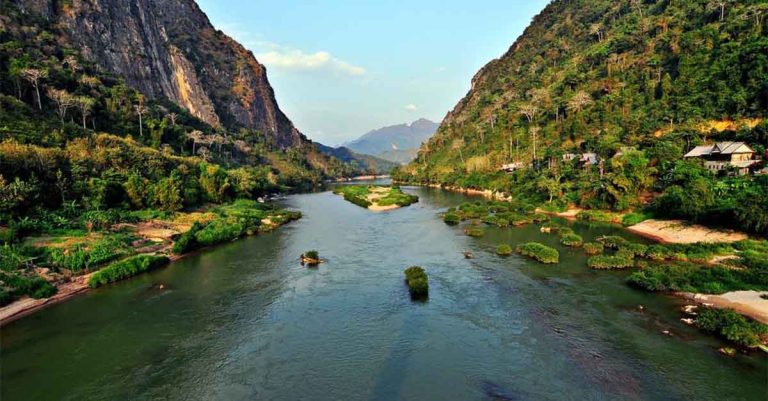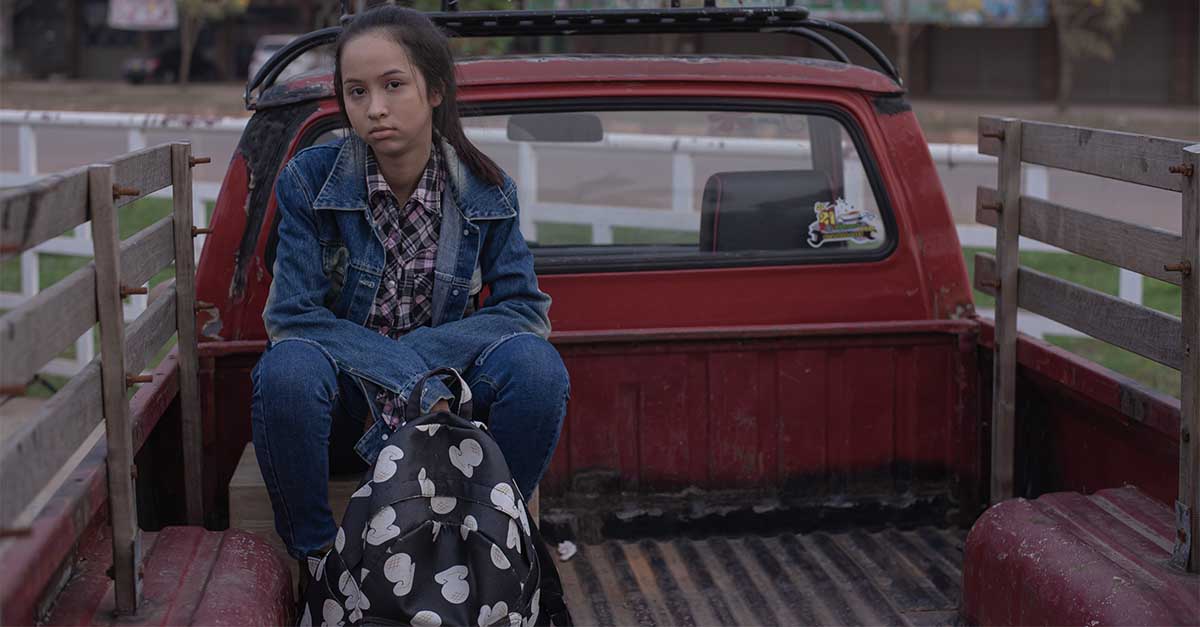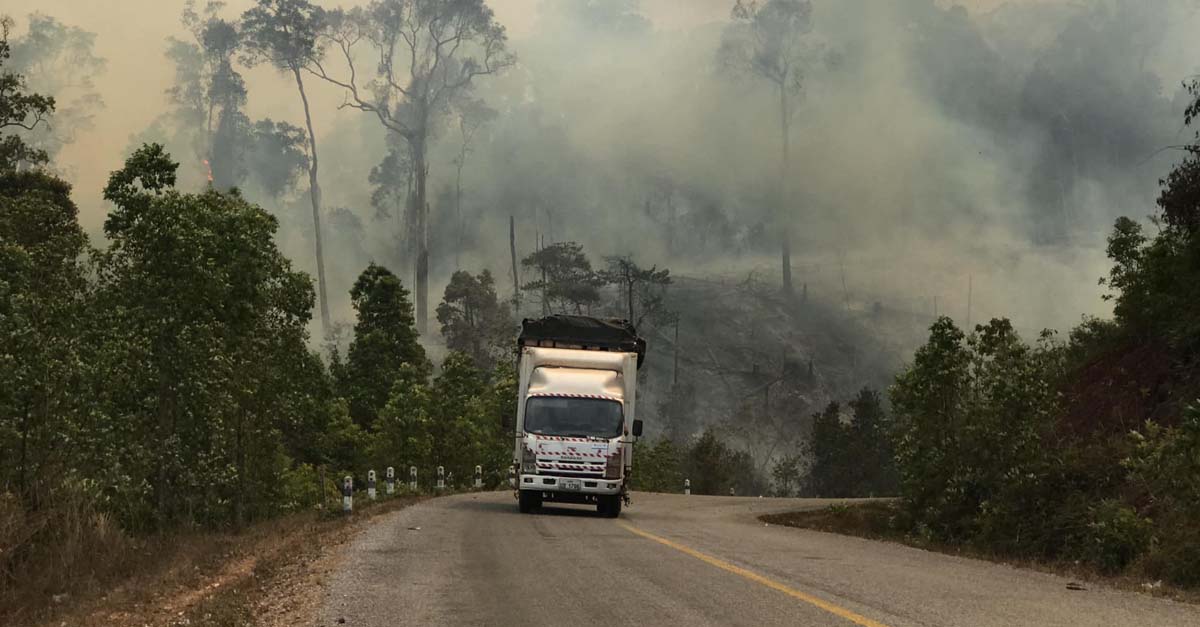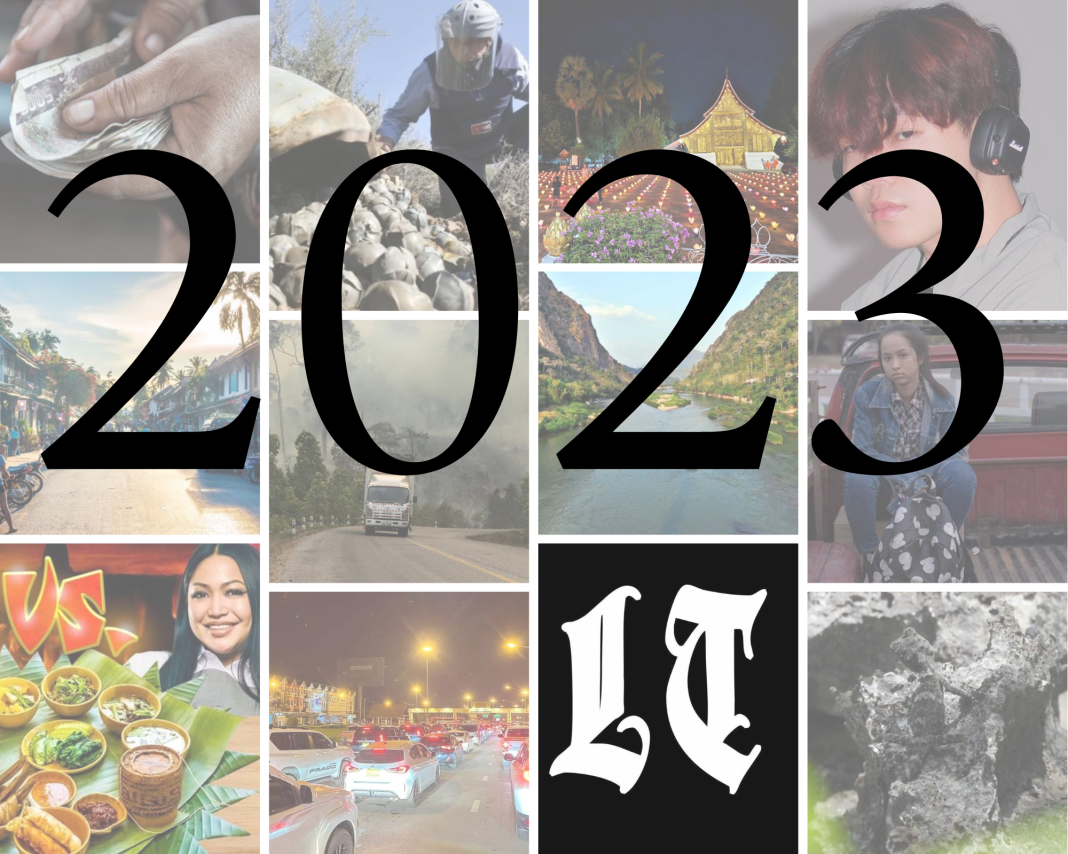With 2024 just around the corner, let’s take a quick look back at the key events that shaped Laos in the past year.
But first, as we bid farewell to 2023, the Laotian Times team extends the warmest New Year wishes to its readers and expresses heartfelt gratitude for their steadfast trust in our publication.
Now, back to our memory journey. In 2023, Laos—like the rest of the world—faced its share of challenges amidst a global backdrop of economic crises, the spillover effects of conflicts in Myanmar, Ukraine, Sudan, and many more, as well as the Israel-Hamas war. As we stand on the brink of the new year, it’s evident that uncertainties and complex global issues will accompany us into the next chapter.
Amidst the difficulties, however, glimmers of positivity shone through in 2023. Laos witnessed a surge in tourism, welcomed the easing of visa restrictions across Asia, celebrated advancements in LGBTQ+ rights, and saw success in the realm of cinema, adding a more pleasant flavor to the year.
As the country steadily continues its journey to recover from the impacts of the COVID-19 pandemic, the nation anticipates a pivotal year ahead. With the ASEAN chairmanship and the launch of the year-long tourism campaign—Visit Laos Year 2024—the upcoming months promise to be marked by renewed energy.
Here is a glimpse into 2023:
Cross-Border Resilience Amid Economic Challenges
Despite high inflation and fluctuating foreign currency prices, residents of Laos continue to actively travel to neighboring Thailand since the reopening of the Lao-Thai borders in May 2022. Social media images depict long lines of cars from Laos at the Lao-Thai Friendship Bridge, indicating that economic factors aren’t dissuading cross-border travel. Many cite reasons like accessing cleaner and cheaper petrol using Union Pay rates, buying household appliances in bulk, and seeking better hospital services. The exchange rate plays a role, with Union Pay offering a more favorable rate than the official government rate. Leisure and religious activities also contribute to the significant increase in visitors from Laos to northeastern provinces in Thailand.

Dispersed Tourism: Laos Emerges as a Serene Alternative
In the meantime, for foreign visitors, Laos emerged as a tranquil alternative to bustling tourism destinations, with dispersed tourism becoming a popular trend. The concept of “dispersed tourism” gained popularity as travelers sought more authentic experiences in less crowded sites. Southern Laos, with the Four Thousand Islands in the Mekong River, and the northern region, with the Nam Ou River winding through picturesque villages, became magnets for those seeking the beauty of nature. Improved infrastructure, including the high-speed railway, played a pivotal role in driving this trend.
Environmental Marvel: The Khammouane Karst Dragon
To add to the wonders of Laos, in October, a groundbreaking study unveiled a new species in Laos that captured the attention of environmentalists and animal conservation experts. The dragon-like lizard, scientifically named Laodracon carsticola or the Khammouane karst dragon, became a symbol of biodiversity in central Laos. Researchers from the National University of Laos and the Zoological Research Institute of China delved into the unique features of this species, emphasizing the challenges it faces due to human activities such as deforestation and mining. This discovery underscored the delicate balance required to preserve the unique biodiversity of limestone karst habitats.
Archaeological Revelations in Tam Pà Ling Cave
Earlier in 2023, researchers made a groundbreaking discovery in the Tam Pà Ling cave, Houaphanh province, unearthing fossilized human skull and leg bone fragments dating back 86,000 years—the oldest examples of modern humans in Southeast Asia. Published in the Nature Communications journal, the findings challenge the established timeline of human migration, suggesting earlier unsuccessful attempts. The cave, 300 km from the sea, challenges the coastal route theory, indicating early Homo sapiens’ adaptability in upland forested regions. Archaeologists believe humans have inhabited the cave for at least 50,000 years.
From Global Premieres to Local Theaters: “The Signal” Takes Center Stage
After more than a year since its global debut, the Lao drama horror film “The Signal” finally graced local theaters in November. The Laotian Times spoke with lead actress Hannah Rosenbloom and director Lee Phonesavanh, unraveling the insights behind the storyline.

Culinary Controversy
But not every moment in 2023 was without its share of controversies. Malaysian stand-up comedian Nigel Ng, popularly known as Uncle Roger, sparked public outrage by criticizing Lao cuisine in a video, calling it a “shit version of Thai food” and prompting American-Lao chef Ae Southammavong to invite Uncle Roger to experience authentic Lao dishes. In a video titled “Uncle Roger CANCELED BY ANOTHER COUNTRY,” Ae and Uncle Roger cooked dishes like Tam Mak Houng and Nam Khao, with Uncle Roger expressing appreciation for the flavors of Lao papaya salad. The video garnered 1.3 million views within a day.
The ‘netpie’ Debate
Another video published by the Facebook page World Friends, aiming to showcase how 20 different Asian countries pronounce words like “Netflix” and “McDonald’s,” has stirred controversy in Laos. The Lao participant’s exaggerated pronunciation led to accusations of fakery from Lao internet users, who questioned her authenticity. Further investigation revealed that most participants in the video were actors based in South Korea, adding fuel to the authenticity debate. The term “netpie,” a mispronunciation from the video, has become a meme in Laos, with social media users incorporating it into their posts.
Cassava Boom Raises Environmental Concerns
Amidst the ongoing economic crisis, the cassava boom raised concerns about deforestation and environmental impacts. Cassava, the leading export item in Laos, totaled USD 85 million in February, with Thailand and Vietnam being major buyers for Monosodium glutamate (MSG) production. China imports Lao cassava for tapioca flour. This demand has led to routine slash-and-burn practices, causing a haze of toxic smoke across provinces, affecting residents’ health and tourism. Experts warn of devastating ecosystem impacts, including soil erosion and loss of biodiversity, jeopardizing Laos’ forest cover goal.

Jack’s Unexpected Turn of Fate
In a quick turn of events, 25-year-old Anousa “Jack” Luangsuphom, initially reported dead after a shooting in late April, turned out to be alive and undergoing medical treatment just a few hours after the incident. Jack was shot twice at close range inside a cafe in Vientiane’s Chanthabouly District. Sources close to Jack revealed that his family had initially kept his survival a secret due to concerns for his safety. The revelation has prompted donations for Jack’s medical expenses, while social media users call for authorities to address the incident captured on CCTV.
Laos Speaks Up Over US Cluster Bomb Deployment to Ukraine
Earlier this year, following the United States’ decision to send cluster bombs to Ukraine as part of ammunition support in the Russia-Ukraine war, Laos, the most heavily bombed country per capita, expressed deep concern. The Ministry of Foreign Affairs (MOFA) released a statement highlighting the lasting impact of cluster munitions on the lives and livelihoods of the Lao people, who continue to be affected by unexploded ordnance from the Vietnam War. Laos called on all states to refrain from using, producing, transferring, and stockpiling cluster munitions as per the Convention on Cluster Munitions, signed by 123 nations, with both the US and Russia refusing to sign.
May the coming year bring more stories and discoveries for Laos and the Laotian Times’ readers. Happy New Year!
THE LAOTIAN TIMES



